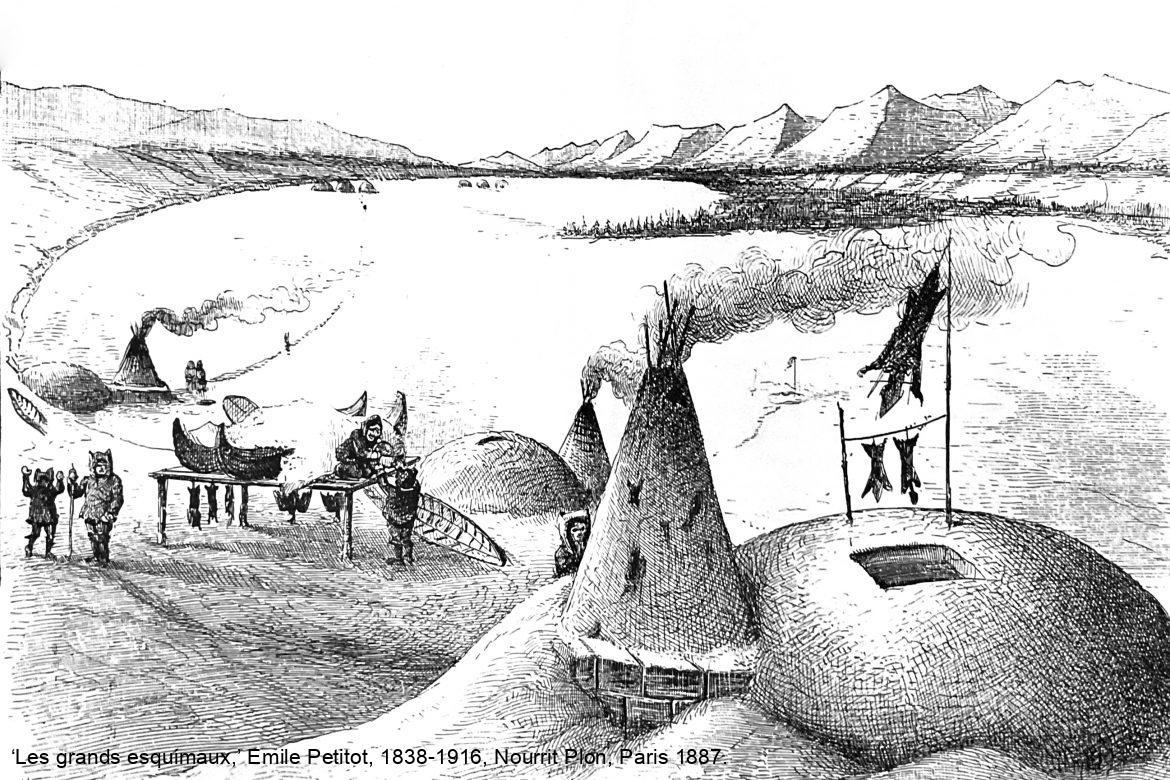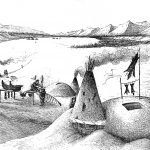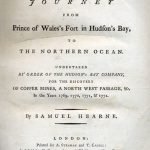1770s
War and Peace
Oral histories of the Tłı̨chǫ and Yellowknives Dene share a story of a war between their nations beginning in the 1770s and ending 50 years later with a guarded peace. European explorer Samuel Hearne suggested the conflict was over trade goods. Hearne, in a published account of his journey from Fort Prince of Wales on Hudson Bay to the mouth of the Coppermine River, recorded “… a war has ensued between the two tribes, for the sake of a few remnants of iron-work which was left among them; and the Dog-ribbed Indians are so numerous and so successful.” Hearne undoubtedly didn’t have the whole story as he could not have possibly known the complexities of hostile societal relations. Hearne’s journals most frequently mention Yellowknives fighting and killing Tłı̨chǫ. Hostilities continued into the 1800s. Hudson’s Bay Company records note the Tłı̨chǫ retaliated in October of 1823 when they killed 34 Yellowknives.
According to Tłı̨chǫ stories, it was through the oratory skills of Chief Edzo that the Yellowknives Chief Akaitcho (Ekè-cho – ‘Big-foot’) was convinced to accept peace. The Yellowknives and Tłı̨chǫ sealed this agreement with a huge celebration. It concluded with a dance that lasted two days. The circle from that dance can still be seen today on the shores of Mesa Lake. Akaitcho and Edzo instructed their people to marry each other so the peace treaty would be honoured forever.
The Tłı̨chǫ and Yellowknives were not the only two nations with complex relations. Hearne’s published journal recounts a violent altercation between his guide Matonabbee, their accompanying Dene travelling companions, and a group of Inuit camped near Coppermine River and the Arctic Coast. Hearne wrote his tale after he returned to England, and recent research into the events at the place he named Bloody Falls suggests the massacre may not have happened; however, ill feelings between Inuit and Dene groups lingered into the next century. The Inuvialuit were reluctant to journey to the new fur trade posts in the Mackenzie Delta, so the Hudson’s Bay Company established Fort Anderson to try and capitalize on the furs in the Anderson River region.
The Dene and Inuit also found themselves caught between the increasingly violent trade wars of the HBC and its free trade rivals, generally controlled by the North West and the XY traders all along with the Mackenzie and the Athabascan water systems. These ended naturally after 1820 with the amalgamation of the major companies into one fur trade empire, stretching from Atlantic Coast to Pacific Coast to the Arctic coast.


